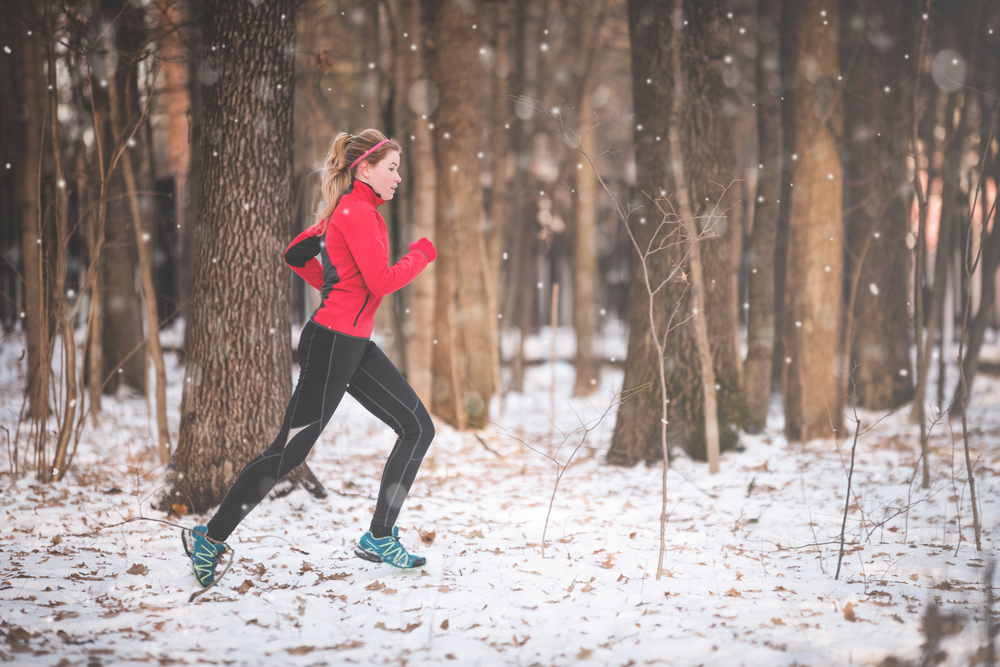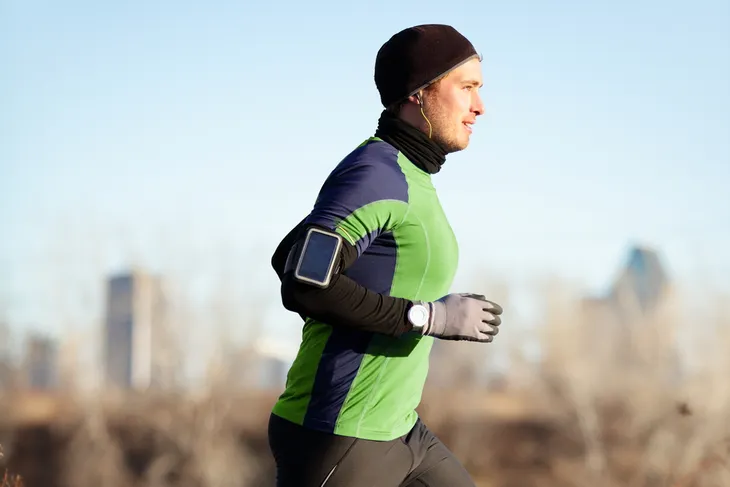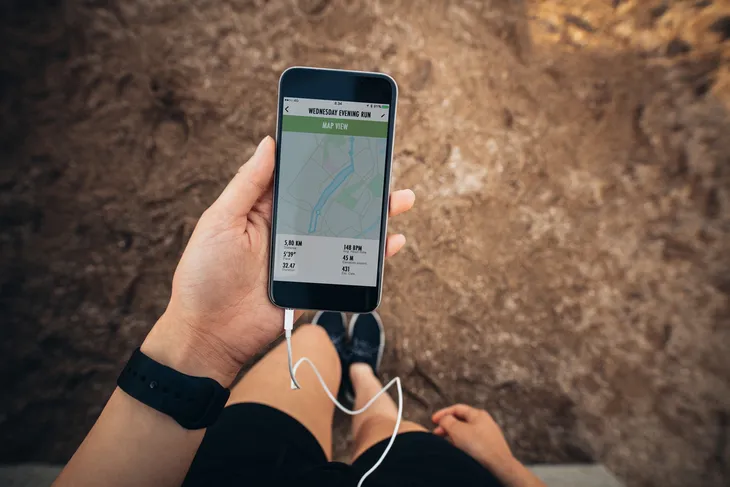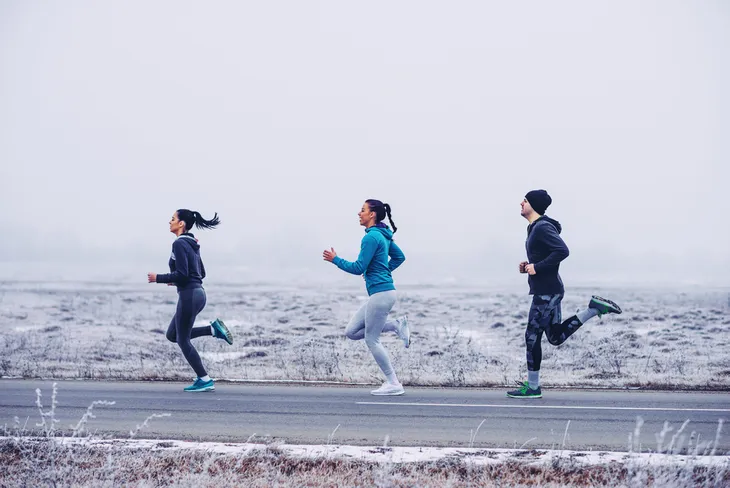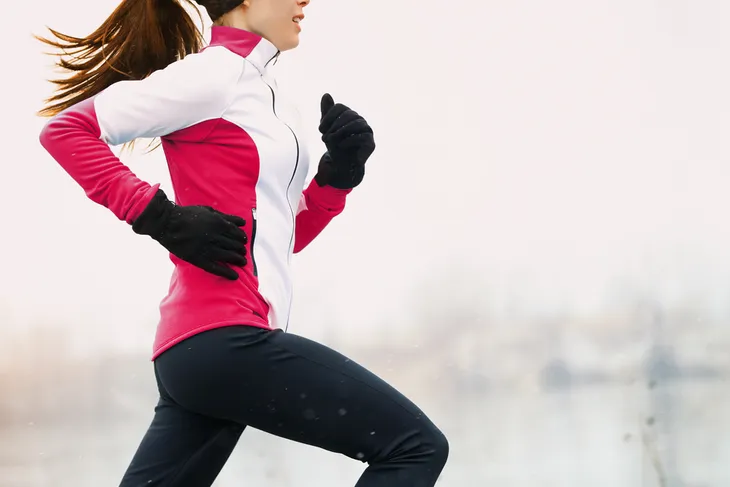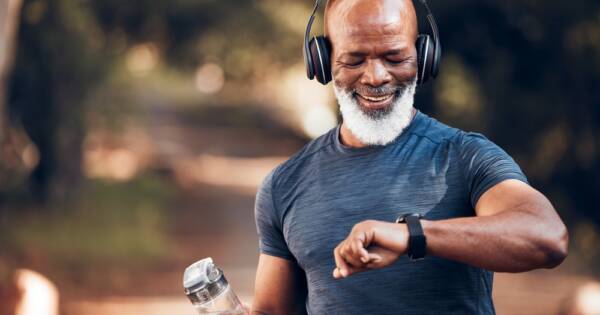I run outside all year long and I live in South Western, Ontario. Yes, that’s in Canada and no I’m not crazy. In fact, I’ve come to enjoy winter a lot more—even with the snow, freezing winds, and even the odd ice patch due to my winter running. However, I’m very aware that extra safety precautions are essential to safely run through the winter months.
Keep your outdoor running routine safe all winter long with these tips…
Lace Up Properly
When it comes to running in winter, your shoes are what’s between you and all of that snow, ice, and frigid cold temperatures. Swap your light, minimalist sneakers for a pair of sturdy, rugged trail footwear with good tread.
Trail-specific runners will keep you from slipping and falling along frozen trails and sidewalks due to extra thick and sturdy traction. Alternately, I’ve purchased a pair of slip on traction guards over my regular runners as well. These are usually outfitted with plastic spikes for extra traction on frozen surfaces.
Listen Up!
I know that music helps you get into the groove of running. However, even though earphones plugged into your favorite workout mix can provide excellent motivation—it can also prevent you from being aware of your surroundings.
If you run alone, particularly in traffic-prone, dark, frozen surfaces, it’s more important to be focused on oncoming traffic than it is to get a sweat on to your favorite songs. So practice running in silence so you’re present in the moment and aware of potential dangers during winter.
Stand Out
It’s as important for oncoming cars, buses, dog walkers, and cyclists to notice you as it is for you to notice them. So make sure you stand out on runs by outfitting yourself in bright colors and reflective running gear.
Almost every piece of running gear is available brightly colored for just this purpose. Think neon hats and mitts, bright colored thermal, neon or reflective sneaker laces, vivid, and extra reflective strips for running pants, jackets, and shoes.
Stay Connected to Home
While it’s vital to keep your focus by leaving your iPod at home, be sure to keep some essential connections to home—just in case an accident does occur while you’re out for a run. For instance, bring your personal identification (i.e., like your driver’s license) as well as a wallet card containing your phone number (just in case you’re knocked unconscious).
It’s a good idea to also carry your cell phone in your jacket pocket or running arm band if you’re out for a solo run. This way you can call for help if you slip and fall. Also, if you hurt yourself or get a terrible soaker you can always call for a ride home.
Always Share Your Whereabouts
You would never go look at a used car on Craigslist.com without telling a friend or loved one, would you? Well, the same rules apply to running outdoors during winter. In potentially treacherous conditions always make a buddy aware of your running route and how long you expect to be out.
If no one is home, leave a note for a parent, spouse, or roommate with your departure time and how long you expect to be running. You can also use and share an app, like MapMyRun, that allows you and others to map your route on every road, hill, twist, and turn.
Run Facing Traffic
It’s never wise to walk nor run in the same direction as traffic, which allows vehicles to approach you from behind where you can’t often see or hear them. Instead, make a point of running against (or facing traffic) so you can keep an eye on approaching vehicles and bikes—and vice versa.
While it’s also vital to run when you can in lighted areas, running against traffic provides better visibility for you and approaching traffic so both can take defensive measures as needed.
Be Realistic—It’s Winter!
While wearing suitable shoes, hats, gloves, and warm, wicking clothing is vital if you run during the winter months to keep your body insulated while preventing overheating—reality should always be first and foremost…after all it is winter.
That means, you may need to change up a favored trail route for an open park or sidewalk if they aren’t ploughed properly. Oftentimes, you may feel more comfortable running during light, which means late nights are early mornings may also be out. And on particularly blizzard-prone, icy days, you may also be forced to take your workout safely indoors away from the dangerous elements. Remember, your safety is the most important.
